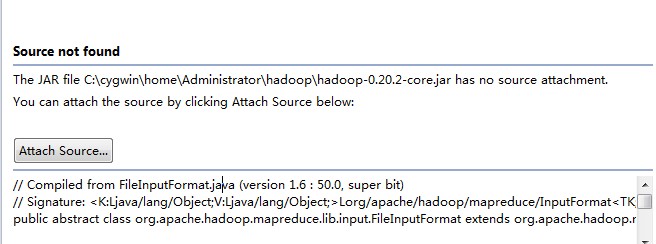EJ2 Item 18: Prefer inte易做图ces to abstract classes
其中一段:Inte易做图ces allow the construction of nonhierarchical type frameworks.
Type hierarchies are great for organizing some things, but other things don’t fall
neatly into a rigid hierarchy. For example, suppose we have an inte易做图ce representing
a singer and another representing a songwriter:
public inte易做图ce Singer {
AudioClip sing(Song s);
}
public inte易做图ce Songwriter {
Song compose(boolean hit);
}
In real life, some singers are also songwriters. Because we used inte易做图ces
rather than abstract classes to define these types, it is perfectly permissible for a
single class to implement both Singer and Songwriter. In fact, we can define a
third inte易做图ce that extends both Singer and Songwriter and adds new methods
that are appropriate to the combination:
public inte易做图ce SingerSongwriter extends Singer, Songwriter {
AudioClip strum();
void actSensitive();
}
You don’t always need this level of flexibility, but when you do, inte易做图ces are
a lifesaver. The alternative is a bloated class hierarchy containing a separate class
for every supported combination of attributes. If there are n attributes in the type
system, there are 2^n possible combinations that you might have to support. This is
what’s known as a combinatorial explosion. Bloated class hierarchies can lead to
bloated classes containing many methods that differ only in the type of their arguments,
as there are no types in the class hierarchy to capture common behaviors.
问题:
1. 这里提到的在type system中的attributes是指什么,因为对示例接口而言,没有域,难不成是指方法?
2. 为什么会有2^n种可能组合?假如有abc三个属性,那是(),(a),(b),(c),(a,b),(a,c)(b,c),(a,b,c)=2^3
如果是这个意思,它又要如何support?
3. Bloated class hierarchies can lead to bloated classes containing many methods that differ only in the type of their arguments, why? 为什么只能在参数类型上有区别?
4. there are no types in the class hierarchy to capture common behaviors?
这句话如何解释?
thanks in advance! --------------------编程问答-------------------- ding~没人能试着探讨一下吗 --------------------编程问答-------------------- 用inte易做图ce可以搭建无层次框架,那用bloated class如何搭建层次呢?如果所有的2^n组合都集中在一个类里面,那还要继承干吗?就无所谓层次了啊! --------------------编程问答-------------------- 千斤顶~
 --------------------编程问答--------------------
看到这么多英文,估计吓到了一批了。-。-||
--------------------编程问答--------------------
感觉蛮难的...
--------------------编程问答--------------------
--------------------编程问答--------------------
看到这么多英文,估计吓到了一批了。-。-||
--------------------编程问答--------------------
感觉蛮难的...
--------------------编程问答--------------------
非常感谢帮顶 --------------------编程问答-------------------- 因为是替代方案,所以试着对比着来看
inte易做图ce:
public inte易做图ce SingerSongwriter extends Singer, Songwriter {
AudioClip strum();
void actSensitive();
}
实际上它有4个方法
bloated class hierarchy:
就可能有
class SingerSongwriter extends Singer{
AudioClip sing(Song s);
Song compose(boolean hit);
AudioClip strum();
void actSensitive();
}
or
class SingerSongwriter extends Songwriter {
AudioClip sing(Song s);
Song compose(boolean hit);
AudioClip strum();
void actSensitive();
}
但无论哪一种,都会缺失一种类型(there are no types in the class hierarchy to capture common behaviors),以及可能连带缺失的类型,比如Song等,这样可能就会导致Bloated class hierarchies can lead to bloated classes containing many methods that differ only in the type of their arguments。
同时也满足了一个类包含所有可能属性组合(The alternative is a bloated class hierarchy containing a separate class for every supported combination of attributes.),我觉得这里可以把attributes理解为方法之类的,方法也属于对象属性之一。这里恰好是2^2=4,有点全组合的味道,但是不知道strum()和actSensitive怎么来的,权且把strum看成是sing和compose组合的产物,actSensitive代表全组合中的空,这样就能解释2^n,总的来说还有些牵强的地方,但不知道他说的是否100%精准。
补充:Java , Java相关




